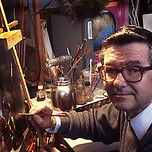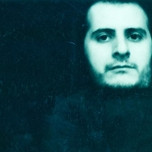
Other Artists
Contemporary art in three points
The term « Contemporary art » allows us to design art that appeared after 1945. It brings together various artistic productions and several artists, which complicates its definition until it becomes clear. NOW. Even its date of appearance arouses discussion, because some artists believe that it emerged with pop art in 1960. Despite the fact that it appeared in 1960, it was born in 1960. Despite the differences of opinion on contemporary art, it has some specificities that distinguish it.(...)
The different types of contemporary art
Contemporary artists have different specialties. They are igigraphists, lithographers, designers, visual artists and many others.
- The digigraphist: this is an artist who uses new technology to create his works. The Epson brand professional printer is its main work tool. He plays on the colors of the inks to bring out the specificities of the light. In reality, digigraphy was born thanks to Epson to enable each digital artist to perfect their works. It’s a way to make them timeless. The artist produces photos with film technology before digitizing them. These have a certificate of authenticity.
- The glassmaker: he uses glass to design his works. He can produce decorative objects and glass structures by scrupulously choosing his equipment and materials. This contemporary craftsman can intervene in the decoration.
- The poster artist: as his name suggests, this artist produces posters to classify them as works of art. He can be a designer, a drawer or a painter.
- The pyrography: this artist uses fire to draw on the surface of a support. The latter can be leather, wood or another material to be used. flattened surface. It is a primitive art intended for shaping or processing the decoration of everyday objects such as plates, vases and bottles.
- The visual artist: it designates contemporary artists whose working medium is « plastic ». Visual artists use different materials to create their paintings, sculptures and posters.
Contemporary artistic movements and genres
Many contemporary artistic movements and genres have followed one another in the past. since 1945. They range from expressionism art brut through lettrism e and other movements which each have their particularities.
- Expressionism : the advent of this movement dates from the end of the Second World War. It is aptly named because it is a means for the contemporary artist to express his feelings. It is another expression of the global political situation of the time. European artists whose works were marked by the war influenced the Americans.
- Lettrism: it succeeds to expressionism. This movement was born in 1945 thanks to Isidore Goldstein. Its appearance is motivated by the desire to from this artist to innovate art and society. He talks about the music of letters, for example. The illustrator uses letters on his graphic productions. Lettrism is found even in the seventh art.
- Art brut: four years later modest or raw art appeared. The MADI and the spatialism precedes it. The first stands out for its geometric works with the predominance of the cubic form. The second was initiated by Lucio Fontana in 1947 and differs from other works by its three dimensions. Brut art, as for him, dates from 1949. It is an atypical artistic genre which brings together the works of artists described as psychopaths. Among the latter are Joseph Crépin and the abbé Oven.
- Combine painting: this artistic movement is one of the most recent. It dates from the 1960s and is characterized by the use of various materials and objects in the same work. In one of his works, Rauschenberg, shows his talent as an engraver, painter and photographer. This author even uses a stuffed rooster.
BeyondFrom the year 2000, the definition of the movement and the existing artistic genre becomes complicated. The artists each adopt their own style. It should be noted that movements often arise from an understanding between them. From this time on, the artistic movements of Asian and Western countries gained ground without dominating the artistic world.





































































